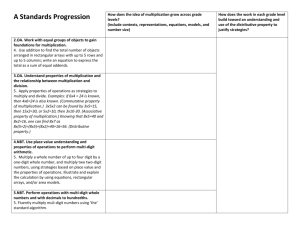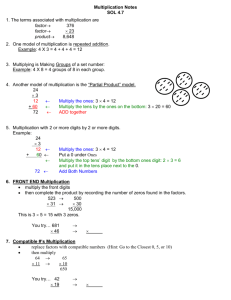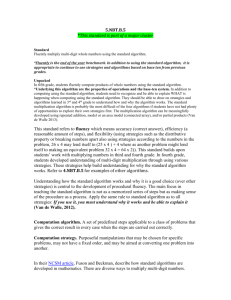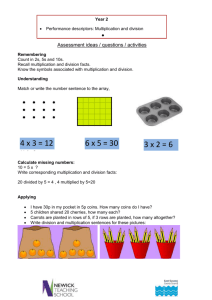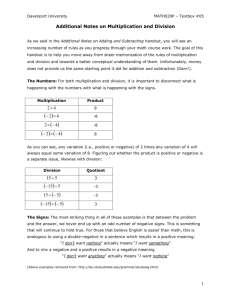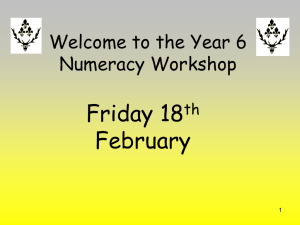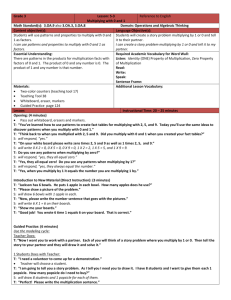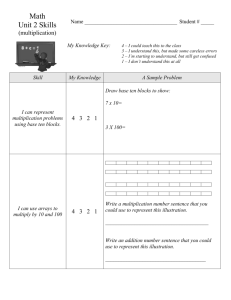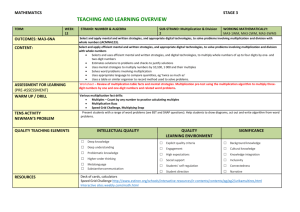4.NBT.B.5 Unpacked
advertisement
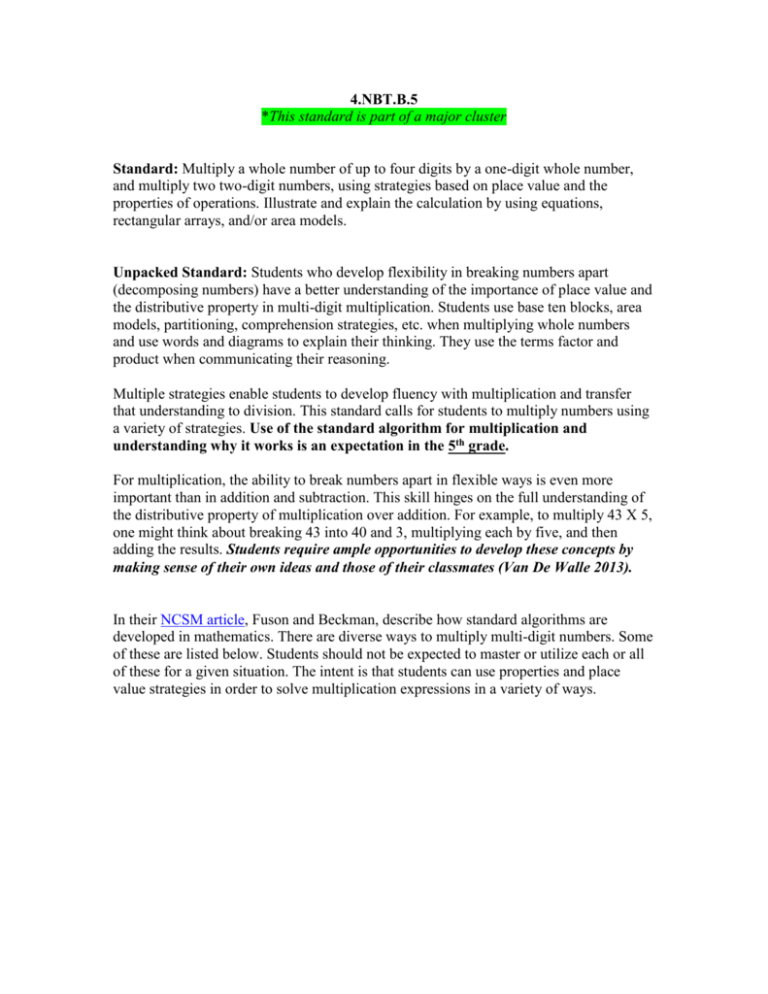
4.NBT.B.5 *This standard is part of a major cluster Standard: Multiply a whole number of up to four digits by a one-digit whole number, and multiply two two-digit numbers, using strategies based on place value and the properties of operations. Illustrate and explain the calculation by using equations, rectangular arrays, and/or area models. Unpacked Standard: Students who develop flexibility in breaking numbers apart (decomposing numbers) have a better understanding of the importance of place value and the distributive property in multi-digit multiplication. Students use base ten blocks, area models, partitioning, comprehension strategies, etc. when multiplying whole numbers and use words and diagrams to explain their thinking. They use the terms factor and product when communicating their reasoning. Multiple strategies enable students to develop fluency with multiplication and transfer that understanding to division. This standard calls for students to multiply numbers using a variety of strategies. Use of the standard algorithm for multiplication and understanding why it works is an expectation in the 5th grade. For multiplication, the ability to break numbers apart in flexible ways is even more important than in addition and subtraction. This skill hinges on the full understanding of the distributive property of multiplication over addition. For example, to multiply 43 X 5, one might think about breaking 43 into 40 and 3, multiplying each by five, and then adding the results. Students require ample opportunities to develop these concepts by making sense of their own ideas and those of their classmates (Van De Walle 2013). In their NCSM article, Fuson and Beckman, describe how standard algorithms are developed in mathematics. There are diverse ways to multiply multi-digit numbers. Some of these are listed below. Students should not be expected to master or utilize each or all of these for a given situation. The intent is that students can use properties and place value strategies in order to solve multiplication expressions in a variety of ways. Area Models The area model or the connected array is a key visual representation that can support students’ multiplicative understanding and reasoning (Barmy, Harries, Higgins, & Suggate, 2009; Izak, 2004). Using the repeated addition approach, the area model encourages a visual demonstration of the commutative and distributive properties (unlike the number line or a model of equal groups). The area model can also be linked to successful representations of the standard multiplication algorithm and future topics such as multiplication of fractions. Example 1: **27 football players in Las Cruces each scored 17 points last season. How many points did they score altogether? Explain your reasoning using illustrations and calculations. 27 x 17 = 200+140 = 340 70 + 49 = 119 340 + 119 = 459 The players scored 459 points altogether. Area model Example 2: Area Model represented by base ten blocks: 27 x 17= Partitioning Strategies: Students break numbers up in a variety of ways that reflect an understanding of base-ten concepts. The By Decades strategy (which could be extended to By Hundreds, Thousands, etc.) is the same as the standard algorithm except that students always begin with the largest values. It extends easily to three digits and is very powerful as a mental strategy. Example 28 x 5 Example 27 x 4: Partial Products is a partitioning strategy as well: * The above examples are mean to illustrate some strategies for multiplying multi-digit numbers using strategies based on place value and base ten. They are not representative of all strategies that students might use. Questions to demonstrate understanding and increase rigor: How many different ways can you solve 289 x 8? 94 x 64? Explain your strategies. What two factors can be multiplied to result in a product of 126? Create two multiplication sentences that could create a product between 200 and 500? How does the order of the digits in the factors impact the product? (e.g. 452 x 7 compared to 425 x 7) Is the product of 29 x 34 over or under 900? Explain how you know. Think of an example in life when you might multiply two numbers?, An example when you might multiply two two-digit numbers? or a three-digit number by a one digit number?
